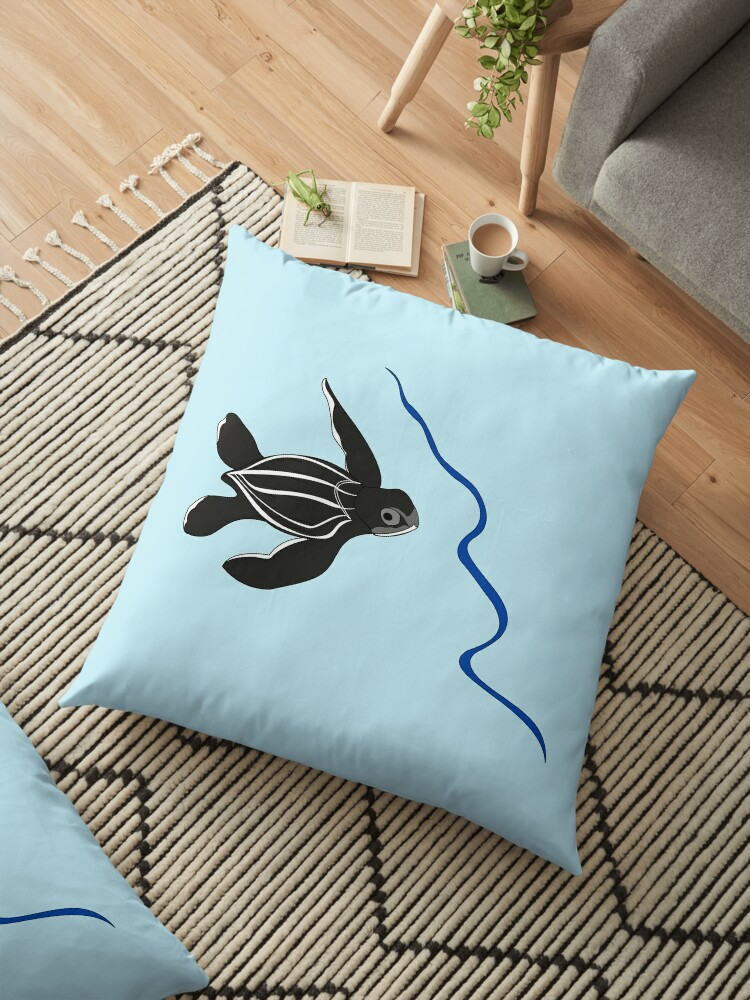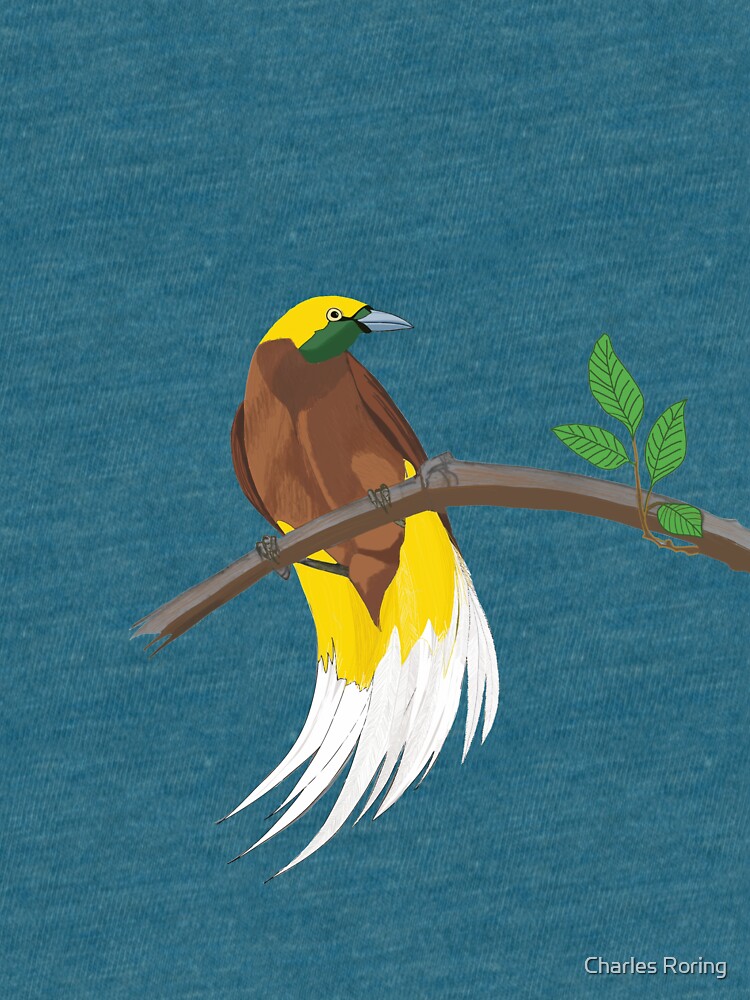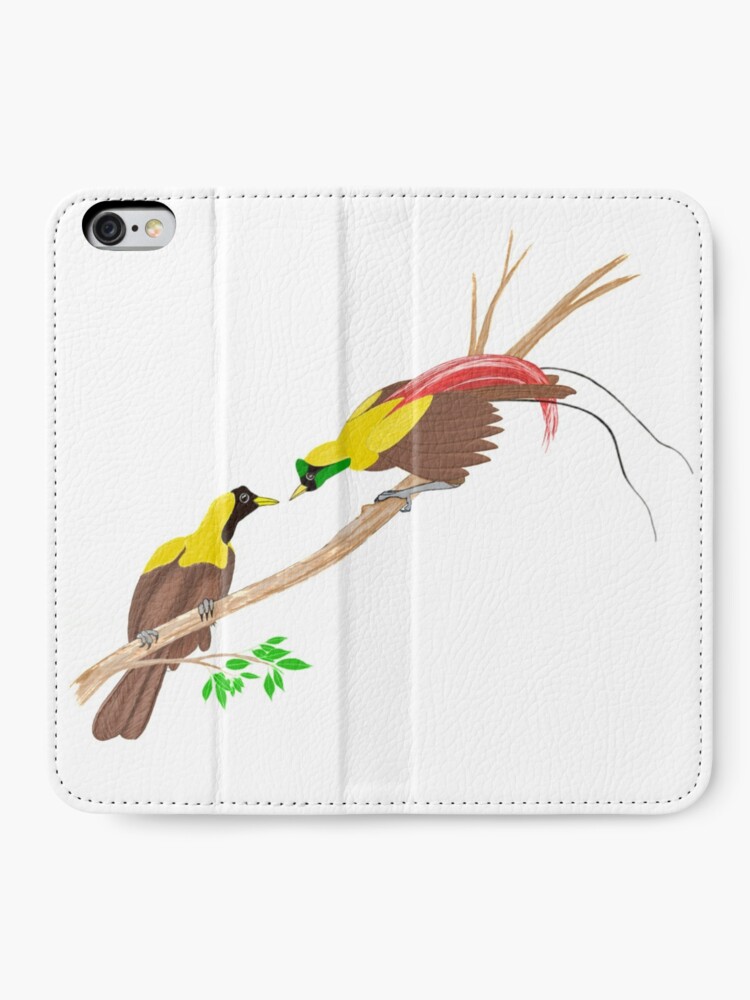Dopi is the tributary of Pami - a river in the north coast of Manokwari. It is a nice destination for nature lovers who want to go hiking in the tropical rainforest of West Papua. Last week, I guided a British biologist, Georgie, on a 3-day hiking tour in the jungle of Dopi river. This British biologist was interested in tropical flowers such as rhododendron, dendrobium and terrestrial orchids. Some flower trees such as the African tulip (spathodea campanulata) grew at the bank of the river. They can easily be recognized by their cup shaped flowers whose petal colors are orange and yellow. The following is the photograph of a terrestrial orchid that we saw in the jungle. I guess it is from Genus Spathoglottis. It looks very similar to spathoglottis plicata but honestly I dare not identify its species name.
During our hiking tour, we were able to see various species of birds including the lesser birds of paradise (paradisaea minor), blyth's hornbill (rhyticeros plicatus) and pygmy parrots. I also took some pictures of pinon imperial pigeon that was perching on the branch of a tree around 20 meters above my head. The bird has got delicate gray feather. With my Nikon Coolpix P500, I shot the birds several times. I had to use 2 second self timer feature of the camera to create sharper photograph. In my first trip to this forest last year with Herman van der Hart and Elizabeth Pot, I was lucky because I saw a Western Crown Pigeon.
While walking through the Dopi river, I caught a green frog and handed it over to Georgie. She gently held this amphibian animal but later it jumped out of her hands and into the water again. I hardly ever saw a frog swimming in the river. Perhaps, it jumped into the river trying to escape from its predator (a snake). The coral rocks that we saw at the bottom of the river indicated that the land had been elevated from the sea perhaps since several centuries ago. Alfred Russel Wallace in his book The Malay Archipelago also explained about the elevated reefs not only in New Guinea but also in other islands such as Moluccas, Java and Timor.
We stayed in a camp that had been built for tourists. At night we ate stir fried vegetables and sweet potatoes. When we were busy preparing our dinner, Georgie took the opportunity by learning how to make sambal (chilli sauce).
This rainforest tour is offered to anybody who wants to explore the tropical rainforest of West Papua in affordable price. Besides hiking, birdwatching and camping, tourists will be able to appreciate the high biodiversity of the rainforest and support its preservation. The rainforest tour itself will provide employment opportunities to local people who are the main stakeholder of this precious environment. If you are interested in taking a rainforest tour in Manokwari, please, contact me via e-mail: peace4wp@gmail.com. by Charles Roring
Also read: Hiking tour in Inggramui forest
Wildlife watching tour to see birds as well as other fauna and flora near Sorong city, Raja Ampat, Tambrauw, and parts of West Papua, Minahasa of North Sulawesi, and other regions of Indonesia. I support community based tourism. Please, contact me (Charles Roring) by whatsapp to +6281332245180 or by e-mail to: peace4wp@gmail.com.
Thursday, May 31, 2012
Tuesday, May 29, 2012
Rainforest Flower near Dopi river
While hiking with Georgie - a British biologist through a tropical rainforest near Dopi river, I saw various species of flowers that I could not identify. One of them is shown on the following photograph. This flower plant was located in a tall tree. I think it was an epiphyte. I forgot to ask her to write its name on my book so that I could mention it on this post. So, if you know its English or Latin name, please, inform me.
This flower plant was around 25 meters above hour head. I used my telephoto lens bridge camera Nikon Coolpix P500 to shoot it. The next morning, guided by Elia Kambu, I and Georgie walked up some slopes to a place where we could see some terrestrial orchids that grow along an old logging road of the rainforest of Inggramui village. If you are interested in hiking in the tropical rainforest of Manokwari, you need to bring sleeping bags, mosquito net, GPS device, compass, and the most important thing is a bottle of insect repellent lotion. by Charles Roring
This flower plant was around 25 meters above hour head. I used my telephoto lens bridge camera Nikon Coolpix P500 to shoot it. The next morning, guided by Elia Kambu, I and Georgie walked up some slopes to a place where we could see some terrestrial orchids that grow along an old logging road of the rainforest of Inggramui village. If you are interested in hiking in the tropical rainforest of Manokwari, you need to bring sleeping bags, mosquito net, GPS device, compass, and the most important thing is a bottle of insect repellent lotion. by Charles Roring
Friday, May 18, 2012
Georgie Tries Chewing Betel Nut
I accompanied Georgie - a British tourist on a little tour around Missi and Anggrem areas of Manokwari to visit some Papuan artists. She bought bracelets, earrings, necklaces and wooden statues as gifts for her friends and relatives.
When we were in Anggrem, Georgie saw some Papuans who were sitting near a table where betel nut and betel pepper were being sold to pedestrians. She told me that she would like to try chewing them. We stopped at the table and asked the vendor how much a package of pinang was. Pinang is the local name for betel nut + betel pepper + lime powder. The man who stood near the pinang table said that one package was Rp. 3,000.
She paid 5,000 and got 2,000 as the change. The man took some pinang and began chewing it to demonstrate how it should be chewed. First, he peeled off the husk of the betel nut with his front teeth. There was still some husk fiber covering the seed when he began chewing it. After a few seconds, he took the betel pepper and started to chew it. Then he dipped the pepper on the lime powder and put it into his mouth.
Georgie followed him. It was a little bit difficult for her to peel the green husk of the pinang from its seed. Women who were watching her said that if she chews pinang regularly her teeth will become stronger and her mouth will be fragrant. It won't be smelly when she wakes up in the morning.
After around 2 or 3 minutes, she could make it and began chewing the unripe pinang. She took the betel pepper and acted as what the Papuan man had done. Five minutes later, I could see that Georgie's face turned red. Sweats coming out of her face and neck. The juices of these herbs reacted fast. She spat on the ground and there the juice had turned red. I thought she was drunk or was feeling dizzy. I asked a glass of water from women who were sitting near us. One of them entered the kitchen and came out with the water. Georgie gargled to rinse her mouth and spat it to the ground. She drank the water. She felt better after that. A girl handed a baby to Georgie.
While he was in her hands, I took the opportunity to make picture of them. It was a nice experience for her chewing the betel nut for the first time although she was not familiar with its taste. by Charles Roring
When we were in Anggrem, Georgie saw some Papuans who were sitting near a table where betel nut and betel pepper were being sold to pedestrians. She told me that she would like to try chewing them. We stopped at the table and asked the vendor how much a package of pinang was. Pinang is the local name for betel nut + betel pepper + lime powder. The man who stood near the pinang table said that one package was Rp. 3,000.
She paid 5,000 and got 2,000 as the change. The man took some pinang and began chewing it to demonstrate how it should be chewed. First, he peeled off the husk of the betel nut with his front teeth. There was still some husk fiber covering the seed when he began chewing it. After a few seconds, he took the betel pepper and started to chew it. Then he dipped the pepper on the lime powder and put it into his mouth.
Georgie followed him. It was a little bit difficult for her to peel the green husk of the pinang from its seed. Women who were watching her said that if she chews pinang regularly her teeth will become stronger and her mouth will be fragrant. It won't be smelly when she wakes up in the morning.
After around 2 or 3 minutes, she could make it and began chewing the unripe pinang. She took the betel pepper and acted as what the Papuan man had done. Five minutes later, I could see that Georgie's face turned red. Sweats coming out of her face and neck. The juices of these herbs reacted fast. She spat on the ground and there the juice had turned red. I thought she was drunk or was feeling dizzy. I asked a glass of water from women who were sitting near us. One of them entered the kitchen and came out with the water. Georgie gargled to rinse her mouth and spat it to the ground. She drank the water. She felt better after that. A girl handed a baby to Georgie.
While he was in her hands, I took the opportunity to make picture of them. It was a nice experience for her chewing the betel nut for the first time although she was not familiar with its taste. by Charles Roring
Tuesday, May 15, 2012
Rhododendron Flowers in the Rainforest of Arfak
Arfak mountains have been famous as tour destination for visitors who want to go hiking and birdwatching. As a matter of fact, its rainforest is the natural habitat of rhododendron flower plants. The following photograph shows (perhaps) a species of rhododendron zoelleri that is growing near the guesthouse of Syioubri village.
If you are interested in taking a rainforest tour in Arfak mountains to see the flowers or to watch birds of paradise that live there, please, contact me via my email: peace4wp@gmail.com
If you are interested in taking a rainforest tour in Arfak mountains to see the flowers or to watch birds of paradise that live there, please, contact me via my email: peace4wp@gmail.com
Sunday, May 13, 2012
Rainforest Flower Ipomoea Aquatica
The following flower in Latin is called Ipomoea Aquatica. This is a famous aquatic plant in the tropical regions. In Indonesia this plant is known as "kangkung." People eat both the stem and the leaves of kangkung as delicious vegetables. The kangkung vegetables can be served in raw or stir-fried with salt, onion and dried shrimp paste added to the dish. Although Ipomoea Aquatica has got beautiful flowers, they are not used in indoor decoration. In tropical rainforest, this plant grows in swamps or in the river with slow moving stream.
This rainforest flower has got several English names. Some of them are water spinach, water morning glory and water convolvulus. The stems of Ipomoea Aquatica are hollow enabling the plant to float on the water. I took the picture of these white flowers of the water spinach next to my parent's house in Amban area of Manokwari.
Last week I was able to identify another white flower which I saw growing in Inggramui forest. Its name is Glory Vine (Faradaya Splendida). This vine flower releases very nice fragrant.
The biodiversity in the tropical rainforest of Manokwari is very high. That's why the rainforest is seen as a recommended hiking destination for tourists who want to see the beauty of nature of New Guinea. If you are interested in hiking in Manokwari, please, contact me via email: charlesroring@gmail.com
Also read: Rainforest Flowers in Inggramui
Monday, May 7, 2012
Passion Flowers
Passion flower plant grows well in high elevation area of the Arfak mountains. As a vine, plant of passion flower needs a tree or tall shrub plants to grow. I like eating passion fruit. The texture of the fruit is like jelly. It has got sweet taste. The passion flowers look very beautiful but they don't have any strong fragrant. One day, I accompanied two Dutch tourists on a hiking and birding trip in the Arfak mountains. While walking around the guesthouse of Kwau village, I saw a passion vine with some flowers hanging on it. I walked closer to make some pictures but it was quite difficult to do it. All the flowers were facing the ground. So, I had to pull the LCD screen of my Nikon Coolpix P500 camera and tilt it to face my face whereas the lens was aimed at one of the flowers. I pressed the shutter button several times in different settings to see the best one. The result is shown below:
Some buds were hanging on the vine waiting for the right time to bloom also as beautiful passion flowers.
The passion flowers can be seen blooming in the Arfak mountains in late September until October. I asked local people whether it is an endemic plant of Arfak. They said, "no. It was brought to Arfak mountains by American missionaries who came to spread the Gospel. The villagers also said that the seeds of the plants were taken from Wamena - a town in the central mountains of New Guinea. I still don't know whether this plant was originally from the area or had also been introduced to Wamena and the central mountains of New Guinea by American the missionaries.
In addition to passion fruit, Arfak mountains have got various species of tropical flowers that look beautiful both in high and low elevation areas. To book a hiking, and sightseeing tour in Arfak, you can contact me by my email: charlesroring@gmail.com for detailed itinerary and costs.
Also read:
Pretty Rainforest Flowers
Passion Fruit Flower
Some buds were hanging on the vine waiting for the right time to bloom also as beautiful passion flowers.
The passion flowers can be seen blooming in the Arfak mountains in late September until October. I asked local people whether it is an endemic plant of Arfak. They said, "no. It was brought to Arfak mountains by American missionaries who came to spread the Gospel. The villagers also said that the seeds of the plants were taken from Wamena - a town in the central mountains of New Guinea. I still don't know whether this plant was originally from the area or had also been introduced to Wamena and the central mountains of New Guinea by American the missionaries.
In addition to passion fruit, Arfak mountains have got various species of tropical flowers that look beautiful both in high and low elevation areas. To book a hiking, and sightseeing tour in Arfak, you can contact me by my email: charlesroring@gmail.com for detailed itinerary and costs.
Also read:
Pretty Rainforest Flowers
Passion Fruit Flower
Saturday, May 5, 2012
Bowerbird
Bowerbird is a unique species of bird that you can watch in Arfak mountains. The male bird builds bower (an arch structure made of small wooden twigs) and decorates it with flowers, and other colorful articles to attract female birds. After neatly cleaning and arranging the bright objects at his display ground, the vogelkop bowerbird (Amblyornis inornatus) sings or imitates the sounds of other birds, dogs and even humans to seduce his female bowerbirds. If the female is interested to see his bower, she will land and inspect the decoration. When she is pleased with it she will allow him to approach her for mating. The Vogelkop Bowerbird in Arfak mountains has been one of the most popular tourist attractions. Birders from every corner of the world fly to Manokwari city just to watch the bird.
In addition to the vogelkop bowerbird, the mountain range of Arfak and the north coast of Manokwari have got a number of species that are worth watching such as the lesser birds of paradise (paradisaea minor), western parotia (parotia sefilata), pinon imperial pigeon, beautiful fruit dove, kingfisher, the blyth's hornbill (rhyticeros plicatus) and many others.
Watching Lesser Birds of Paradise
The lesser birds of paradise can be watched in the tropical rainforest of Inggramui and in Warmarway. The male birds of paradise perform courtship dance in the morning between 06.00 and 09.00 on the branches of a tree to attract their females. Even though the sun has risen in the east during those hours, under the canopy of the big trees, it was dark. Birders need to practice taking pictures of subjects in low light condition to obtain the best photographs. Using a tripod is highly recommended. Because the location of the birdwatching place is far from the city, birders must bring extra batteries for their photographic and video devices. The birdwatching tour package that I offer through this blog is aimed at supporting the local indigenous Papuan in protecting these animals so that the hunting of the birds can be stopped. For further information about the birding and hiking tour package, please, download the brochure that I have prepared on the top left corner of this blog or contact me at peace4wp@gmail.com
Also read: Hiking trip in the rainforest of Senopi
In addition to the vogelkop bowerbird, the mountain range of Arfak and the north coast of Manokwari have got a number of species that are worth watching such as the lesser birds of paradise (paradisaea minor), western parotia (parotia sefilata), pinon imperial pigeon, beautiful fruit dove, kingfisher, the blyth's hornbill (rhyticeros plicatus) and many others.
Watching Lesser Birds of Paradise
The lesser birds of paradise can be watched in the tropical rainforest of Inggramui and in Warmarway. The male birds of paradise perform courtship dance in the morning between 06.00 and 09.00 on the branches of a tree to attract their females. Even though the sun has risen in the east during those hours, under the canopy of the big trees, it was dark. Birders need to practice taking pictures of subjects in low light condition to obtain the best photographs. Using a tripod is highly recommended. Because the location of the birdwatching place is far from the city, birders must bring extra batteries for their photographic and video devices. The birdwatching tour package that I offer through this blog is aimed at supporting the local indigenous Papuan in protecting these animals so that the hunting of the birds can be stopped. For further information about the birding and hiking tour package, please, download the brochure that I have prepared on the top left corner of this blog or contact me at peace4wp@gmail.com
Also read: Hiking trip in the rainforest of Senopi
Subscribe to:
Posts (Atom)
Merchandise
Please, support this blog by buying art drawings and illustrations of wild animals and plants in the form of prints on various products as follows:


















